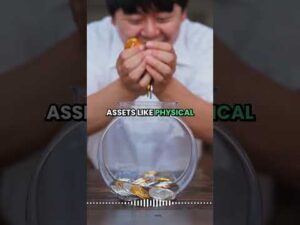
Over recent weeks, the stablecoin market seems to have entered a somewhat dormant phase, barely breaching the $123 billion mark as we approach the latter part of October. Despite an unexpected surge in fiat-pegged token trading on October 13, stablecoin transactions only accounted for 22.96% of the total trade volume in the global cryptocurrency market. Just a day prior, they made up a whopping 74% of all trades.
Fluctuating Valuations and Trade Volumes: A Sign of Things to Come?
The past few weeks have presented a tough challenge for the fiat-pegged token market. Tether (USDT), a prominent player in the stablecoin market, only saw a slight 0.5% increase in its supply. On the other hand, USD Coin (USDC), another major player, experienced a 4.3% reduction in its reserves. DAI, the third-largest stablecoin by market cap, had 1.3% cut from its supply, while TrueUSD (TUSD) saw a favorable 6.5% increase. Binance USD (BUSD), sitting in the fifth spot, saw a substantial 15.5% reduction in its supply.
At this time, BUSD’s market cap hovers around $2.13 billion, dangerously close to dropping below the $2 billion mark. Over the past month, the supply of Tron's USDD remained stable, while FRAX saw a minor 0.5% growth. Pax Dollar (USDP) was not as lucky, losing 7.2% of its supply. Meanwhile, the newcomer, First Digital USD (FDUSD), experienced an 18.7% surge in supply. As of October 13, 2023, Paypal's newly minted stablecoin stands as the 13th largest, with a circulation of 119 million.
A Sudden Drop in the Stablecoin Economy
On the morning of October 13, stablecoins accounted for 22.96% of the $62 billion total trade volume worldwide, a dramatic fall from the 74% seen just the day before. That same evening, the stablecoin economy briefly dipped below the $123 billion mark, with the global trade volume dropping to $34.13 billion. In other notable news, Tether announced a forthcoming leadership transition: Paolo Ardoino, the former Chief Technology Officer, will step into the CEO role in December, with outgoing CEO Jean-Louis van der Velde moving to an advisory role.
The Struggles of Lesser-Known Stablecoins
In addition, this week saw a significant setback for a lesser-known stablecoin, USDR, which is now trading at half its former $1 parity. Managed by Tangibledao, this previously stable coin lost its parity on October 11 and has not regained its previous value. Despite the team's pledge to address this issue via a post on a social media platform, the post remains private, blocking any public responses. Therefore, USDR has now joined the growing list of fiat-pegged tokens that have lost their dollar pegs.
What Lies Ahead for the Stablecoin Market?
With the recent shifts in the stablecoin market, we are left to ponder what the future holds for these digital currencies. Will we see more fluctuations, or is the market merely stabilizing after a period of growth? As always, your thoughts and insights on the subject are welcome.
Frequently Asked Questions
Can I buy gold using my self-directed IRA
However, gold can only be purchased with your self-directed IRA. To do so, you must first open a brokerage account at TD Ameritrade. You can also transfer funds from another retirement account if you already have one.
The IRS allows individuals to contribute up to $5,500 annually ($6,500 if married and filing jointly) to a traditional IRA. Individuals can contribute as much as $1,000 per year ($2,000 if married filing jointly) to a Roth IRA.
You should consider buying physical gold bullion if you decide to invest in it. Futures contract are financial instruments that depend on the gold price. They allow you to speculate on future prices without owning the metal itself. Physical bullion, however, is real gold and silver bars that you can hold in your hand.
Can I hold a gold ETF in a Roth IRA?
A 401(k) plan may not offer this option, but you should consider other options, such as an Individual Retirement Account (IRA).
Traditional IRAs allow for contributions from both employees and employers. An Employee Stock Ownership Plan (ESOP) is another way to invest in publicly traded companies.
An ESOP offers tax benefits because employees can share in the company stock and any profits that it generates. The money you invest in the ESOP will be taxed at a lower rate than if it were directly held by the employee.
An Individual Retirement Annuity (IRA) is also available. An IRA lets you make regular, income-generating payments to yourself over your life. Contributions to IRAs don't have to be taxable
Should You Invest Gold in Retirement?
How much money you have saved, and whether or not gold was an option when you first started saving will determine the answer. If you are unsure of which option to invest in, consider both.
You can earn potential returns on your investment of gold. Retirement investors will find gold a worthy investment.
Gold is more volatile than most other investments. Its value fluctuates over time.
This does not mean you shouldn’t invest in gold. This just means you need to account for fluctuations in your overall portfolio.
Another advantage to gold is that it can be used as a tangible asset. Gold can be stored more easily than stocks and bonds. It can also be transported.
You can always access your gold as long as it is kept safe. You don't have to pay storage fees for physical gold.
Investing in gold can help protect against inflation. It's a great way to hedge against rising prices, as gold prices tend to increase along with other commodities.
Additionally, it will be a benefit to have some of your savings invested into something that won't lose value. Gold usually rises when the stock market falls.
Another advantage to investing in gold is the ability to sell it whenever you wish. Like stocks, you can sell your position anytime you need cash. You don't even need to wait for your retirement.
If you do decide to invest in gold, make sure to diversify your holdings. Do not put all your eggs in one basket.
Also, don't buy too much at once. Start by purchasing a few ounces. Then add more as needed.
Keep in mind that the goal is not to quickly become wealthy. Instead, the goal is to accumulate enough wealth that you don't have to rely on Social Security.
Gold may not be the most attractive investment, but it could be a great complement to any retirement strategy.
Is the government allowed to take your gold
Because you have it, the government can't take it. You earned it through hard work. It is yours. However, there may be some exceptions to this rule. You can lose your gold if you have been convicted for fraud against the federal governments. Your precious metals can also be lost if you owe tax to the IRS. However, even though your taxes have not been paid, you can still keep your precious metals, even though they are considered the property of United States Government.
Statistics
- Indeed, several financial advisers interviewed for this article suggest you invest 5 to 15 percent of your portfolio in gold, just in case. (aarp.org)
- Instead, the economy improved, stocks rebounded, and gold plunged, losing 28 percent of its value in 2013. (aarp.org)
- The price of gold jumped 131 percent from late 2007 to September 2011, when it hit a high of $1,921 an ounce, according to the World Gold Council. (aarp.org)
- Gold is considered a collectible, and profits from a sale are taxed at a maximum rate of 28 percent. (aarp.org)
- If you accidentally make an improper transaction, the IRS will disallow it and count it as a withdrawal, so you would owe income tax on the item's value and, if you are younger than 59 ½, an additional 10% early withdrawal penalty. (forbes.com)
External Links
bbb.org
forbes.com
wsj.com
- Saddam Hussein's InvasionHelped Uncage a Bear In 90 – WSJ
- How do you keep your IRA Gold at Home? It's not legal – WSJ
















